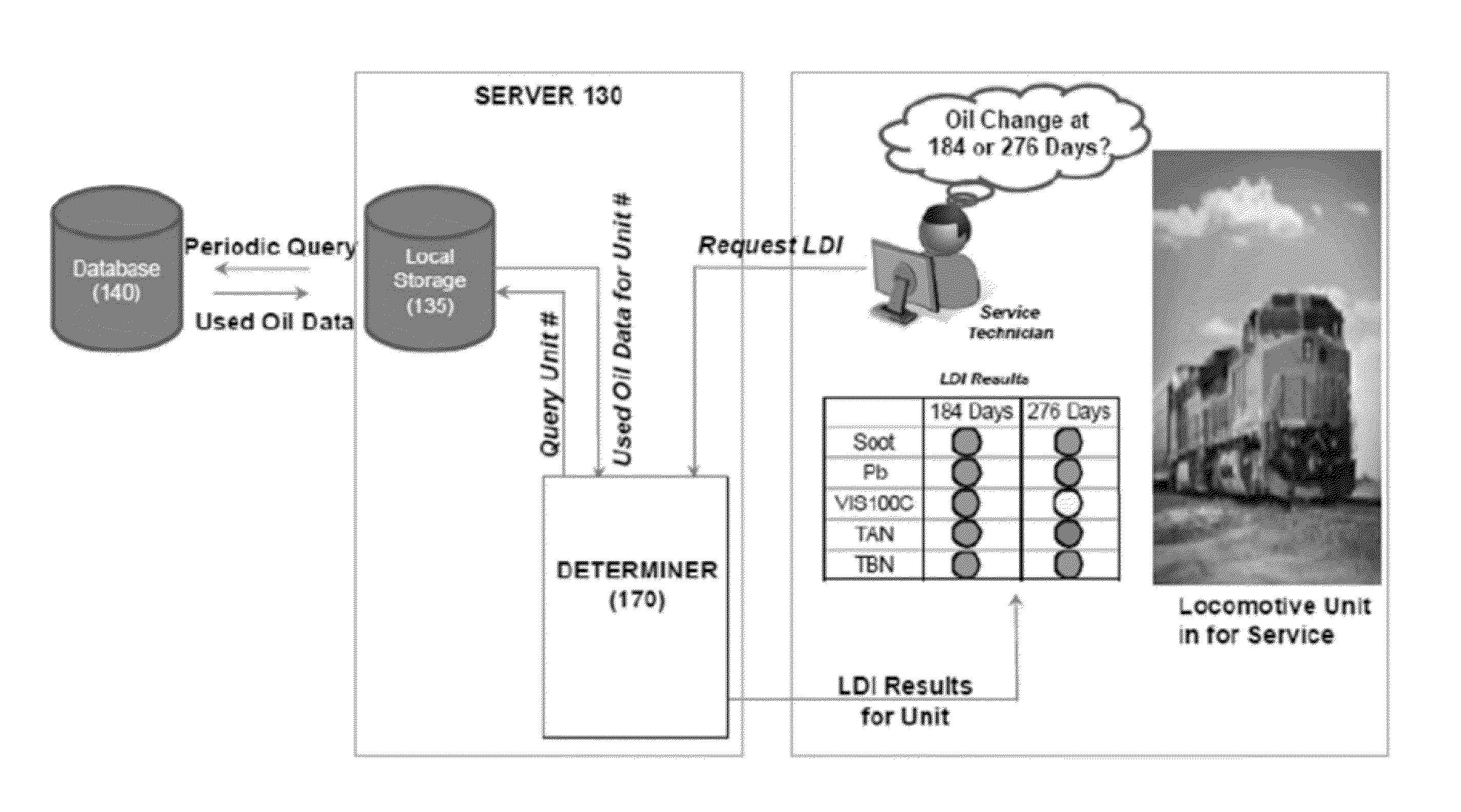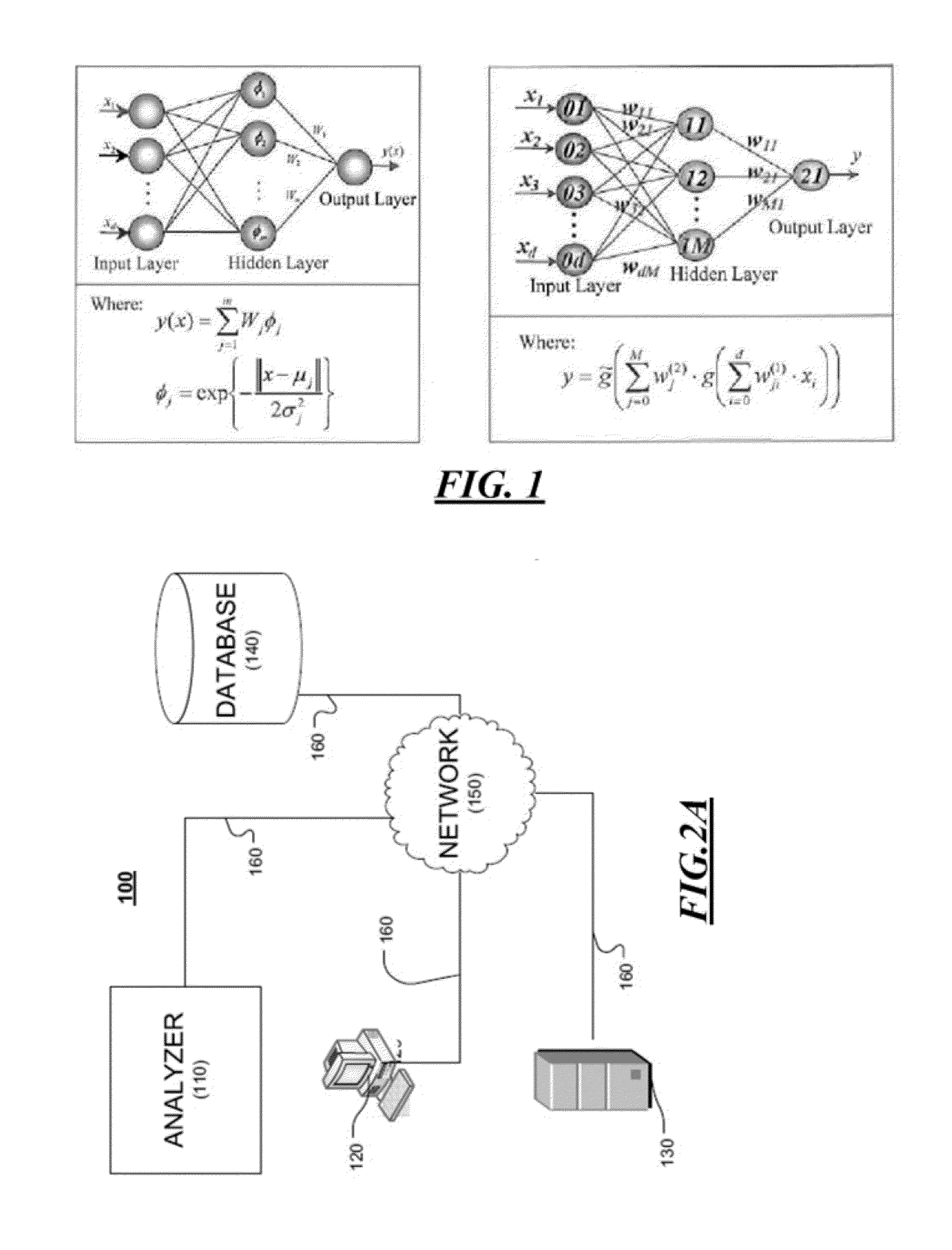System and method for determining a lubricant discard interval
a technology of lubricant and interval, which is applied in the direction of instruments, mechanical equipment, structural/machine measurement, etc., can solve the problems of reducing the power output of the engine, wear on the moving parts, so as to minimize downtime, optimize overall cost, and cost-effective
- Summary
- Abstract
- Description
- Claims
- Application Information
AI Technical Summary
Benefits of technology
Problems solved by technology
Method used
Image
Examples
example 1
[0115]In the following example a partial least squares analysis of data was used to determine when an analysis parameter value would be expected to exceed a threshold value. In the examples, t+X days are arbitrarily selected to illustrate how the analysis is conducted using the claimed system and methods. In the following tables, the values are of each parameter are determined by t+120 days by interpolating between existing data points for each of the measured parameters in a historical record for an engine. For example, Table 1 shows the interpolated values for iron for a particular engine a t+120 days, where t is the estimated oil age in days. Because there is some lag time between when a sample is obtained and the analysis of the sample is determined, the samples are not collected on the last day of a service interval. In other words, the analysis must be received before a selected service interval so that a decision can be made by the time the service interval date arrives. An e...
example 2
[0119]The foregoing analysis can also be done for non-linear data such as viscosity. Table 2 is a table of data for viscosity at 100° C. at t+30 days and t+120 days.
[0120]
TABLE 2
[0121]FIG. 18 is a scatter plot of observed versus predicted value of viscosity at 100° C. at t+120 days using a partial least squares model with a 3 latent variable model. FIG. 19 is a graphical representation of the amount of variation explained for a 3 latent variable model using the partial least squares model for predicting the viscosity at 100° C. at t+120 days for the data. FIG. 20 is a partial least squares model coefficient chart summary of the three latent variable model depicted in FIG. 19 showing the relative importance / effects of various parameter used for predicting the viscosity at 100° C. at t+120 days. FIGS. 21 and 22 are scatter plots of the multivariate data that was analyzed to predict the interpolated iron content and soot content at t+30 and t+120 days in the oil. The matrix plots also ...
PUM
| Property | Measurement | Unit |
|---|---|---|
| temperature | aaaaa | aaaaa |
| temperature | aaaaa | aaaaa |
| temperature | aaaaa | aaaaa |
Abstract
Description
Claims
Application Information
 Login to View More
Login to View More - R&D
- Intellectual Property
- Life Sciences
- Materials
- Tech Scout
- Unparalleled Data Quality
- Higher Quality Content
- 60% Fewer Hallucinations
Browse by: Latest US Patents, China's latest patents, Technical Efficacy Thesaurus, Application Domain, Technology Topic, Popular Technical Reports.
© 2025 PatSnap. All rights reserved.Legal|Privacy policy|Modern Slavery Act Transparency Statement|Sitemap|About US| Contact US: help@patsnap.com



